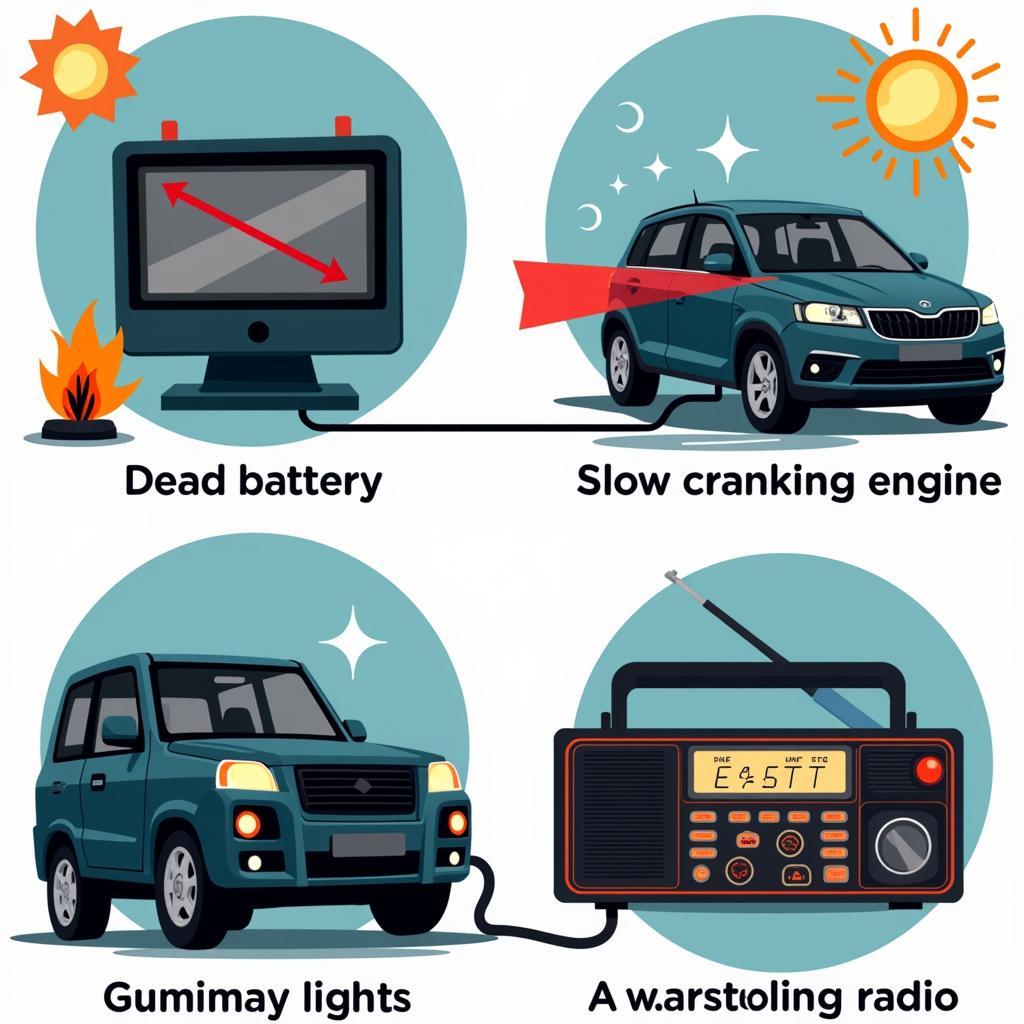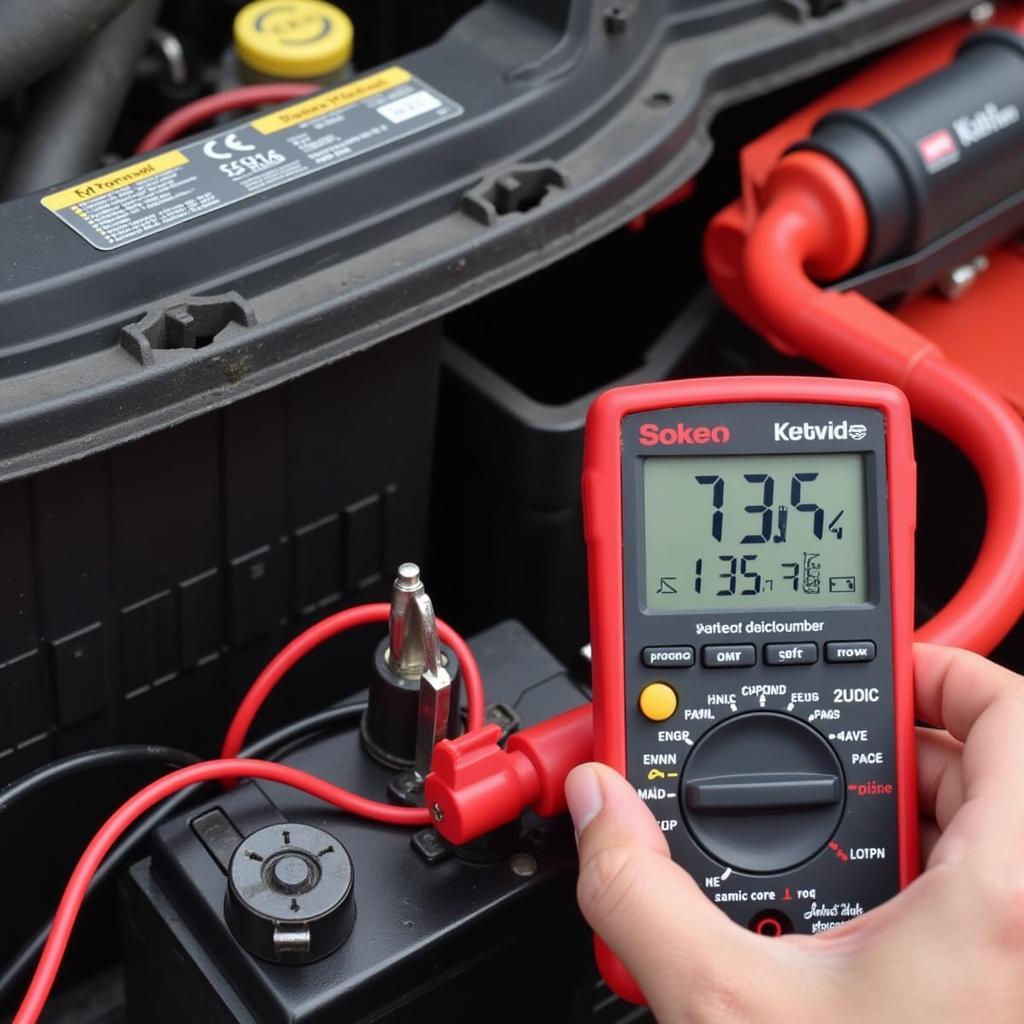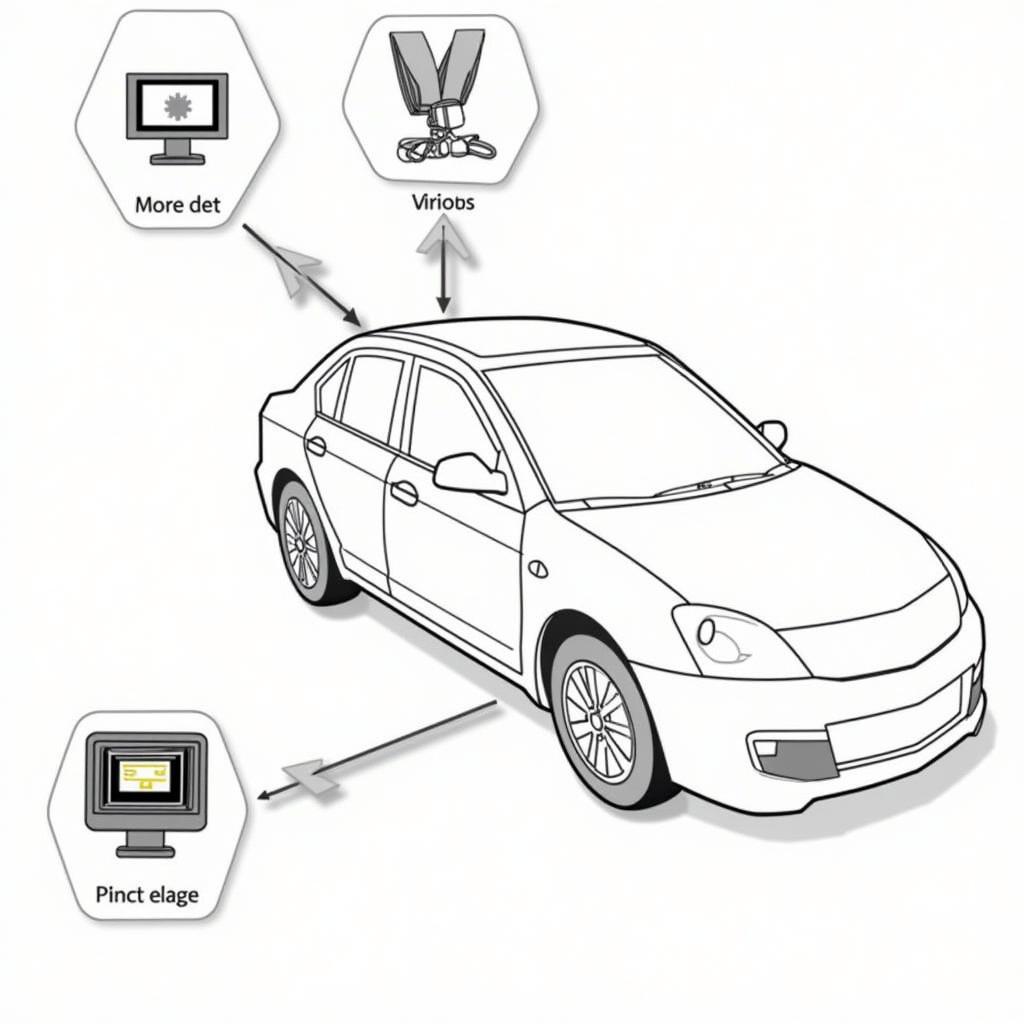Auto parasitic battery drain can be a frustrating and perplexing issue, leaving you stranded with a dead car battery. It occurs when one or more electrical components in your vehicle continue to draw power even after the ignition is turned off. This article will guide you through understanding, diagnosing, and resolving this common automotive problem. We’ll cover various testing methods, common culprits, and offer practical advice for fixing the drain, even if you are not mechanically inclined. automotive parasitic draw
Understanding Auto Parasitic Battery Drain
A parasitic draw, also known as a phantom load or key-off drain, is a small amount of current that continues to flow from your car battery even when the car is off. While a small amount of draw is normal to maintain things like the clock and security system, an excessive drain can deplete your battery overnight or within a few days. Several factors can contribute to this, from faulty components to aftermarket installations. Recognizing the symptoms of a parasitic draw is the first step to solving the problem.
Identifying Symptoms of a Parasitic Draw
- Dead Battery: The most obvious sign is a dead battery, especially if it occurs repeatedly after being fully charged.
- Slow Cranking: If your engine cranks slowly or struggles to start, it may indicate a weakened battery due to a parasitic draw.
- Dimming Lights: Interior lights that appear dimmer than usual, even when the car is running, can be another sign.
- Strange Electrical Behavior: Unusual behavior from electrical components, such as the radio staying on after the car is off, can point towards a drain.
 Common Symptoms of a Parasitic Battery Drain
Common Symptoms of a Parasitic Battery Drain
Diagnosing Auto Parasitic Battery Drain
Pinpointing the source of the drain requires a systematic approach using a few simple tools.
Tools You’ll Need
- Multimeter: This essential tool measures current flow, crucial for identifying the parasitic draw.
- Test light: A simpler alternative to a multimeter, but less precise.
- Owner’s Manual: This will help you identify fuse locations and their corresponding circuits.
Step-by-Step Guide to Testing for a Parasitic Draw
- Prepare the Vehicle: Park your car in a safe location, turn off all accessories, and close all doors and windows.
- Disconnect the Negative Battery Terminal: Carefully disconnect the negative cable from your car’s battery.
- Connect the Multimeter: Set your multimeter to measure DC amps. Connect the red lead to the negative battery terminal and the black lead to the disconnected negative cable.
- Observe the Reading: The multimeter will display the current draw. A normal reading should be between 25 and 50 milliamps (mA). Anything significantly higher suggests a parasitic draw.
- Isolate the Circuit: Begin removing fuses one at a time, observing the multimeter reading after each removal. If the reading drops significantly after removing a particular fuse, you’ve identified the circuit containing the drain. Consult your owner’s manual to identify the components on that circuit.
 Testing for Parasitic Draw with a Multimeter
Testing for Parasitic Draw with a Multimeter
“A methodical approach using a multimeter is key to finding the culprit,” says automotive diagnostics expert, Michael Davies. “Don’t jump to conclusions – test each circuit carefully.”
Common Causes of Auto Parasitic Battery Drain
Several components are frequently responsible for parasitic draws.
- Interior Lights: A faulty door switch can prevent interior lights from turning off completely.
- Glove Box Light: Often overlooked, a stuck glove box light switch can be a surprising culprit.
- Faulty Alternator: A malfunctioning alternator can drain the battery even when the car is off.
- Aftermarket Accessories: Improperly installed aftermarket accessories, such as car alarms or stereos, can cause significant drains.
- Stuck Relays: A relay that remains engaged after the car is off will continue to draw power.
Fixing Auto Parasitic Battery Drain
Once you’ve identified the culprit, fixing the drain often involves replacing the faulty component. For aftermarket accessories, ensure they are correctly wired and installed.
When to Seek Professional Help
If you’re uncomfortable working with electrical systems, or if you’re unable to locate the source of the drain, it’s best to consult a qualified automotive technician. They have the expertise and equipment to diagnose and fix complex electrical issues.
“Don’t underestimate the complexity of automotive electrical systems,” advises automotive electrical specialist, Sarah Chen. “If in doubt, seek professional help to avoid causing further damage.”
compustar remote start parasitic draw
jaguar f pace low battery warning
Conclusion
Auto parasitic battery drain can be a frustrating problem, but with the right approach, it’s often easily diagnosable and fixable. By understanding the causes, symptoms, and testing procedures, you can save yourself time, money, and the hassle of a dead battery. Remember, if you’re unsure about any step, consulting a qualified technician is always the best course of action. Addressing auto parasitic battery drain promptly will ensure your vehicle starts reliably every time.

